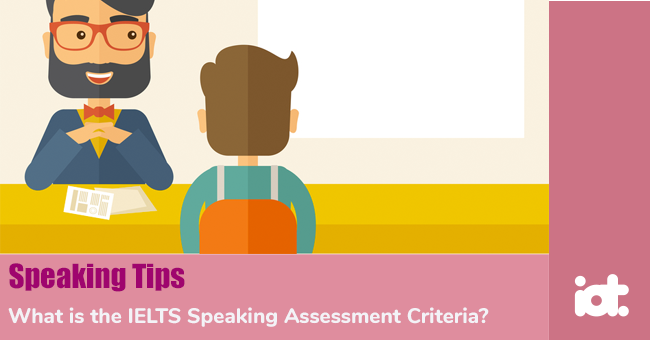| Band | Fluency and Coherence | Lexical Resource | Grammatical Range and Accuracy | Pronunciation |
9 | - Speaks fluently with only rare repetition or self-correction;
- Any hesitation is content-related rather than to find words or grammar;
- Speaks coherently with fully appropriate cohesive features;
- Develops topics fully and appropriately.
| - Uses vocabulary with full flexibility and precision in all topics;
- Uses idiomatic language naturally and accurately.
| - Uses a full range of structures naturally and appropriately;
- Produces consistently accurate structures apart from ‘slips’ characteristic of native speaker speech.
| - Uses a full range of pronunciation features with precision and subtlety;
- Sustains flexible use of features throughout;
- Is effortless to understand.
|
8 | - Speaks fluently with only occasional repetition or self correction; hesitation is usually content-related and only rarely to search for language;
- Develops topics coherently and appropriately.
| - Uses a wide vocabulary resource readily and flexibly to convey precise meaning;
- Uses less common and idiomatic vocabulary skilfully, with occasional inaccuracies;
- Uses paraphrase effectively as required.
| - Uses a wide range of structures flexibly;
- Produces a majority of error-free sentences with only very occasional inappropriacies or basic/non-systematic errors.
| - Uses a wide range of pronunciation features;
- Sustains flexible use of features, with only occasional lapses;
- Is easy to understand throughout; L1 accent has minimal effect on intelligibility.
|
7 | - Speaks at length without noticeable effort or loss of coherence;
- May demonstrate language-related hesitation at times, or some repetition and/or self-correction;
- Uses a range of connectives and discourse markers with some flexibility.
| - Uses vocabulary resource flexibly to discuss a variety of topics;
- Uses some less common and idiomatic vocabulary and shows some awareness of style and collocation, with some inappropriate choices;
- Uses paraphrase effectively.
| - Uses a range of complex structures with some flexibility;
- Frequently produces error-free sentences, though some grammatical mistakes persist.
| - Shows all the positive features of Band 6 and some, but not all, of the positive features of Band 8.
|
6 | - Is willing to speak at length, though may lose coherence at times due to occasional repetition, self-correction or hesitation;
- Uses a range of connectives and discourse markers but not always appropriately.
| - Has a wide enough vocabulary to discuss topics at length and make meaning clear in spite of inappropriacies;
- Generally paraphrases successfully.
| - Uses a mix of simple and complex structures, but with limited flexibility;
- May make frequent mistakes with complex structures though these rarely cause comprehension problems.
| - Uses a range of pronunciation features with mixed control;
- Shows some effective use of features but this is not sustained;
- Can generally be understood throughout, though mispronunciation of individual words or sounds reduces clarity at times.
|
5 | - Usually maintains flow of speech but uses repetition, self correction and/or slow speech to keep going;
- May over-use certain connectives and discourse markers;
- Produces simple speech fluently, but more complex communication causes fluency problems.
| - Manages to talk about familiar and unfamiliar topics but uses vocabulary with limited flexibility;
- Attempts to use paraphrase but with mixed success.
| - Produces basic sentence forms with reasonable accuracy;
- Uses a limited range of more complex structures, but these usually contain errors and may cause some comprehension problems.
| - Shows all the positive features of Band 4 and some, but not all, of the positive features of Band 6.
|
4 | - Cannot respond without noticeable pauses and may speak slowly, with frequent repetition and self correction;
- Links basic sentences but with repetitious use of simple connectives and some breakdowns in coherence.
| - Is able to talk about familiar topics but can only convey basic meaning on unfamiliar topics and makes frequent errors in word choice;
- Rarely attempts paraphrase.
| - Produces basic sentence forms and some correct simple sentences but subordinate structures are rare;
- Errors are frequent and may lead to misunderstanding.
| - Uses a limited range of pronunciation features;
- Attempts to control features but lapses are frequent;
- Mispronunciations are frequent and cause some difficulty for the listener.
|
3 | - Speaks with long pauses;
- Has limited ability to link simple sentences;
- Gives only simple responses and is frequently unable to convey basic message.
| - Uses simple vocabulary to convey personal information;
- Has insufficient vocabulary for less familiar topics.
| - Attempts basic sentence forms but with limited success, or relies on apparently memorised utterances;
- Makes numerous errors except in memorised expressions.
| - Shows some of the features of Band 2 and some, but not all, of the positive features of Band 4.
|
2 | - Pauses lengthily before most words;
- Little communication possible.
| - Only produces isolated words or memorised utterances.
| - Cannot produce basic sentence forms.
| - Speech is often unintelligble.
|
1 | - No communication possible;
- No rateable language.
| | | |
0 | | | | |





